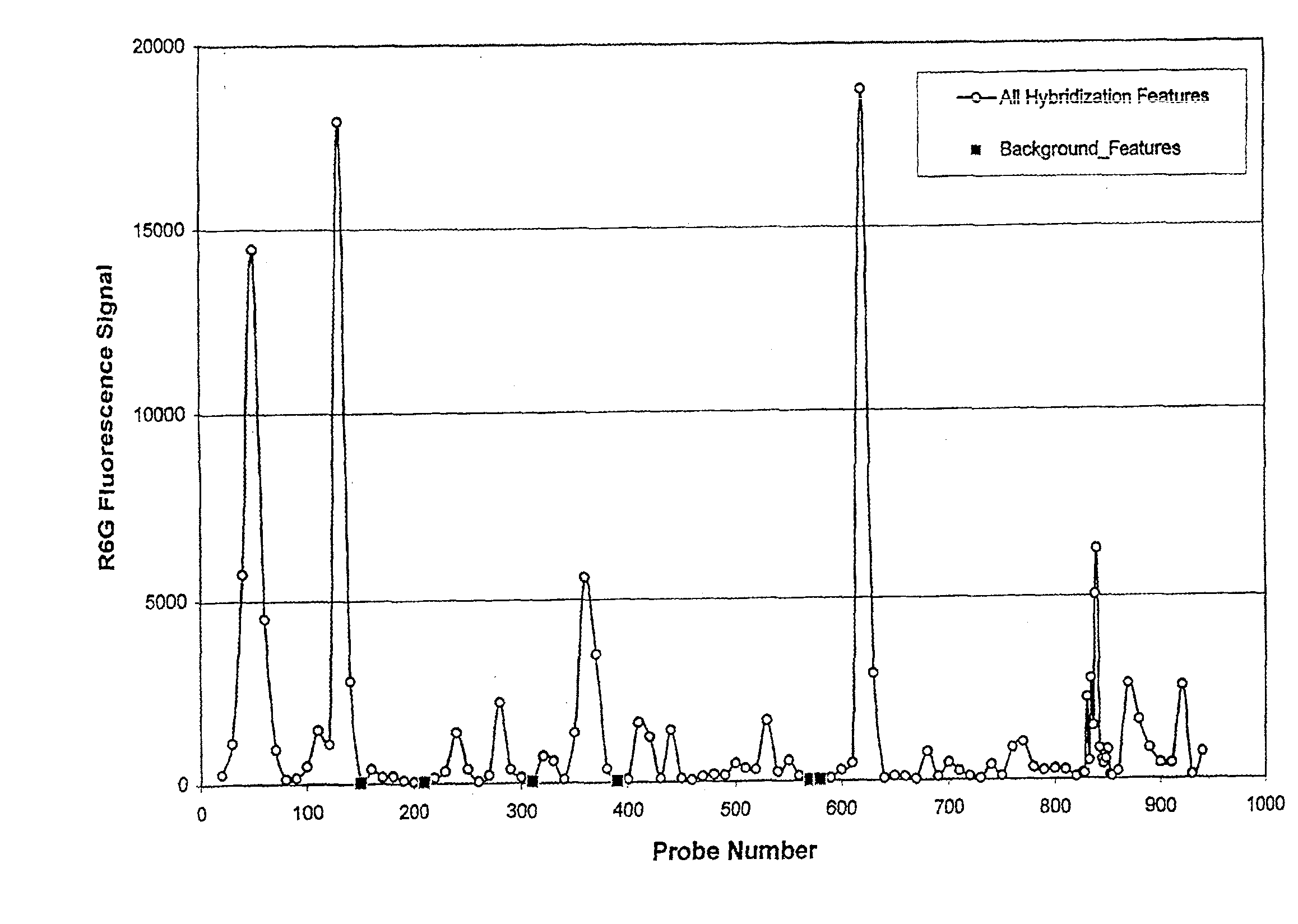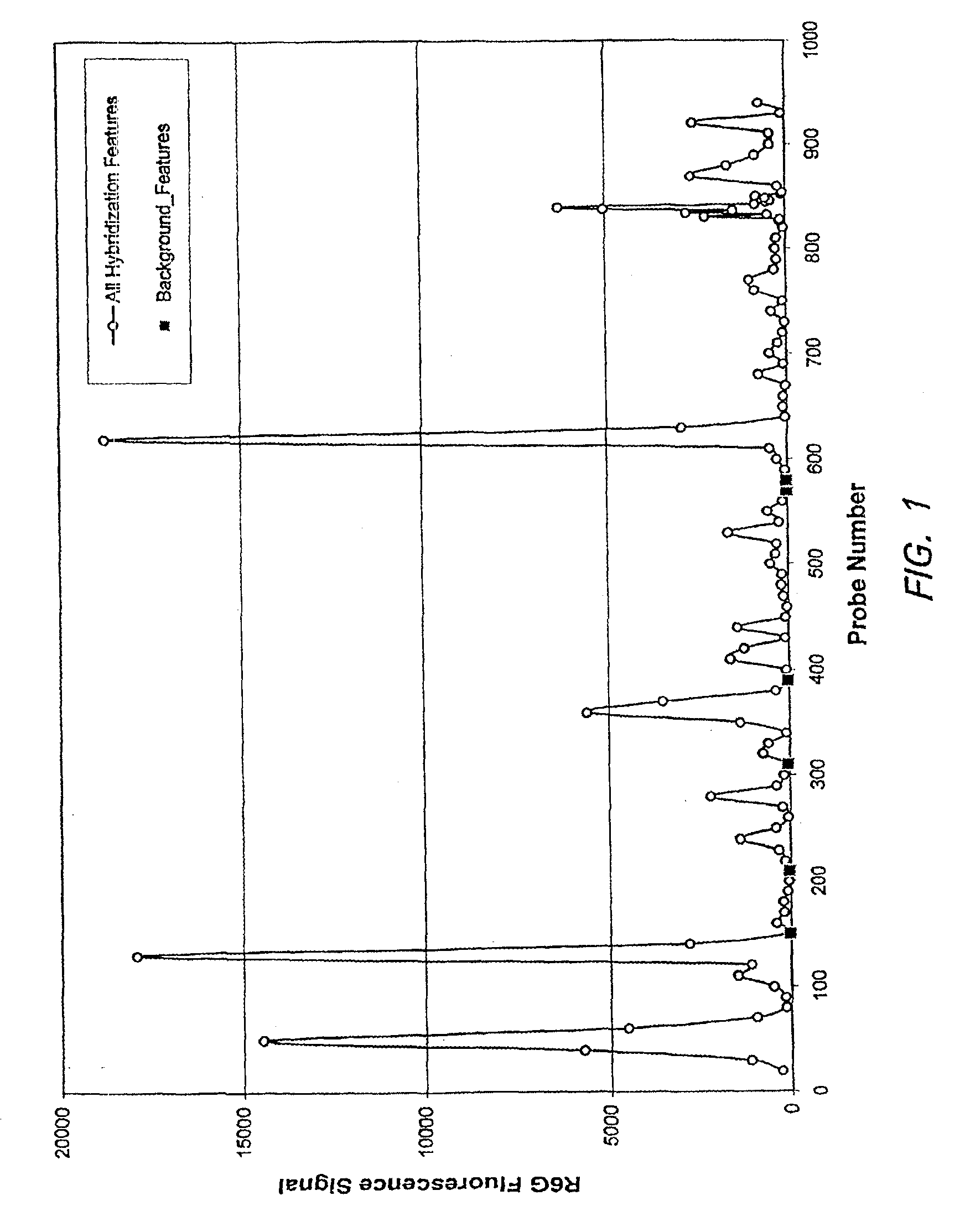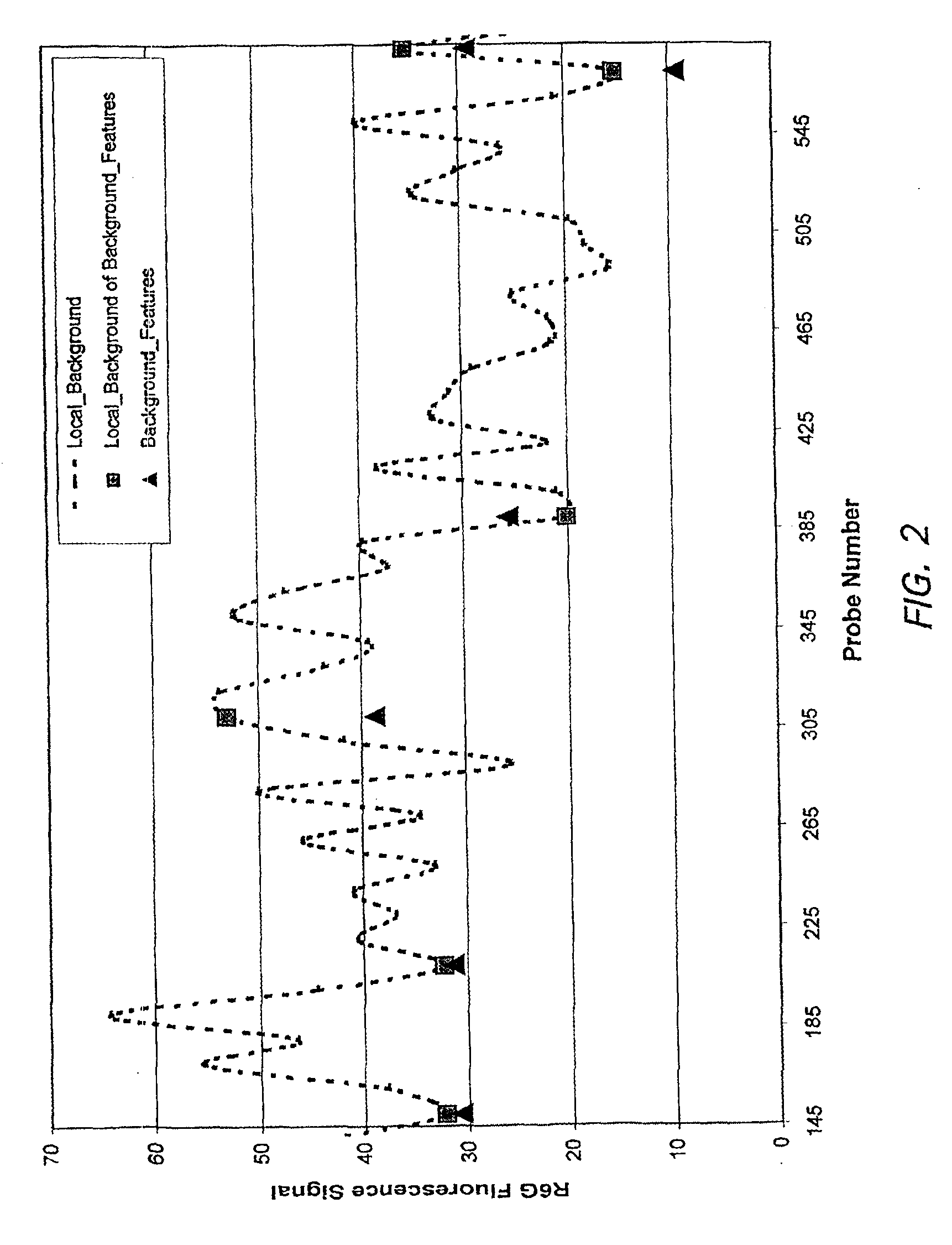Arrays comprising background features that provide for a measure of a non-specific binding and methods for using the same
a background feature and non-specific binding technology, applied in the field of nucleic acid chemistry and hybridization assays, can solve the problems of false positive, nuclear acid hybridization, and signals generated, and achieve the effect of improving, efficient and cost-effective methods
- Summary
- Abstract
- Description
- Claims
- Application Information
AI Technical Summary
Benefits of technology
Problems solved by technology
Method used
Image
Examples
example 1
Empirically Observed Inactive Probes
[0123]In the process of trying to discover and validate probes for arrays that are sensitive to finding their targets, several probes that do not hybridize against their specific target were discovered. This example used in situ oligonucleotide probe arrays and R6G-labeled cRNA of the G3PDH gene (human glyceraldehyde-3-phosphate dehydrogenase gene), wherein the target polynucleotide (SEQ ID NO: 1) is the Watson-Crick complement of the MRNA. The probes in each feature used the sense-strand sequence of the G3PDH gene as input. The design produced 25-mer probes that were spaced at 10 base intervals along the sequence, generating an array of 200 features which were regularly spaced across the entire G3PDH sequence.
[0124]The oligonucleotide probes can be synthesized in situ, using standard methods of sequential phosphoramidite addition. Alternatively, the oligonucleotide probes can be synthesized by conventional chemosynthetic techniques (e.g. phosphor...
example 2
Utilization of Empirically Observed Inactive Probes
[0137]The empirically observed background features were tested against other purified cRNA labeled targets as well as a labeled complex cRNA pool from human liver. An experiment was performed that contained five heterologous targets (“xenogenes”) in a labeled human liver cRNA pool. The xenogenes used were cab, cor47, sig1, pbp1 and pbp2 (see Table 2 for gene information; target polynucleotides are the Watson-Crick complements of the mRNA). The array contained features of the positive control probes (SEQ ID NOs: 2 & 3), background probes (SEQ ID NO: 17), and probes that were being tested for their specific hybridization to the xenogene targets.
[0138]
TABLE 2Sequence IDGenBank AccessionGeneSourceNumberNumberFunctioncabArabidopsis thalianaSEQ ID NO: 19X56062chlorophyll bindingcor47Ar. thalianaSEQ ID NO: 20X59814ABA-mediated cold responsesig1Ar. thalianaSEQ ID NO: 21AF015542chloroplast sigma factorpbpCl (5′-clone) hereinEscherichia coliS...
example 3
Probes Forming Highly Stable Intramolecular Structures
[0142]Probes were designed to form highly stable intramolecular secondary structures. Such structures are well known to the art and include hairpins and pseudo-half knots. It was hypothesized that such probes would hybridize poorly to any target and would possess nonspecific binding properties similar to those of hybridization probes; thus, these probes would be good candidates for background probes.
[0143]A. Design of Hairpin Probes as Background Probes
[0144]The design of these probes utilized stable base pairing for the stem portion and utilized variations of the “GAAA” sequence with a C:G clamp for the tetra-loop portion of the structure (Antao, V. P. et al., Nucleic Acids Research, 1991, 19:5901-5905). Multiple structures were designed and the self-structure properties of the probes were calculated using published thermodynamic parameters and known algorithms, such as the “MFOLD” method (Jaeger, J. A. et al., Proc. Natl. Acad....
PUM
| Property | Measurement | Unit |
|---|---|---|
| temperature | aaaaa | aaaaa |
| wavelengths | aaaaa | aaaaa |
| wavelengths | aaaaa | aaaaa |
Abstract
Description
Claims
Application Information
 Login to View More
Login to View More - R&D
- Intellectual Property
- Life Sciences
- Materials
- Tech Scout
- Unparalleled Data Quality
- Higher Quality Content
- 60% Fewer Hallucinations
Browse by: Latest US Patents, China's latest patents, Technical Efficacy Thesaurus, Application Domain, Technology Topic, Popular Technical Reports.
© 2025 PatSnap. All rights reserved.Legal|Privacy policy|Modern Slavery Act Transparency Statement|Sitemap|About US| Contact US: help@patsnap.com



